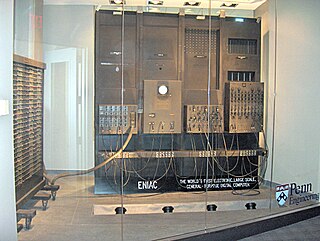
ENIAC was the first programmable, electronic, general-purpose digital computer, completed in 1945. There were other computers that had combinations of these features, but the ENIAC had all of them in one computer. It was Turing-complete and able to solve "a large class of numerical problems" through reprogramming.
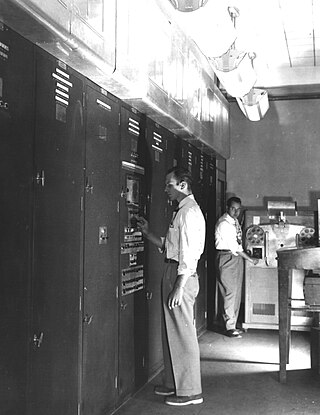
EDVAC was one of the earliest electronic computers. It was built by Moore School of Electrical Engineering, Pennsylvania. Along with ORDVAC, it was a successor to the ENIAC. Unlike ENIAC, it was binary rather than decimal, and was designed to be a stored-program computer.
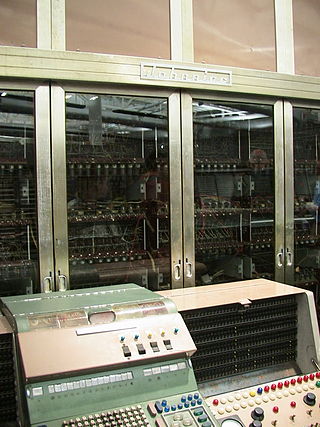
The JOHNNIAC was an early computer built by the RAND Corporation and based on the von Neumann architecture that had been pioneered on the IAS machine. It was named in honor of von Neumann, short for John von NeumannNumerical Integrator and Automatic Computer. JOHNNIAC is arguably the longest operational early computer, being used almost continuously from 1953 for over 13 years before finally being shut down on February 11, 1966, logging over 50,000 operating hours.

The IAS machine was the first electronic computer built at the Institute for Advanced Study (IAS) in Princeton, New Jersey. It is sometimes called the von Neumann machine, since the paper describing its design was edited by John von Neumann, a mathematics professor at both Princeton University and IAS. The computer was built from late 1945 until 1951 under his direction. The general organization is called von Neumann architecture, even though it was both conceived and implemented by others. The computer is in the collection of the Smithsonian National Museum of American History but is not currently on display.

The ILLIAC I, a pioneering computer in the ILLIAC series of computers built in 1952 by the University of Illinois, was the first computer built and owned entirely by a United States educational institution.
The Cyclone, was a vacuum tube computer, built by Iowa State College at Ames, Iowa. The computer was commissioned in July 1959. It was based on the IAS architecture developed by John von Neumann. The prototype was ILLIAC, the University of Illinois Automatic Computer. The Cyclone used 40-bit words, used two 20-bit instructions per word, and each instruction had an eight-bit op-code and a 12-bit operand or address field. In general IAS-based computers were not code compatible with each other, although originally math routines which ran on the ILLIAC would also run on the Cyclone.
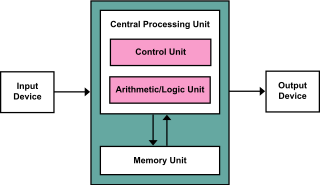
The von Neumann architecture—also known as the von Neumann model or Princeton architecture—is a computer architecture based on a 1945 description by John von Neumann, and by others, in the First Draft of a Report on the EDVAC. The document describes a design architecture for an electronic digital computer with these components:

Herman Heine Goldstine was a mathematician and computer scientist, who worked as the director of the IAS machine at Princeton University's Institute for Advanced Study and helped to develop ENIAC, the first of the modern electronic digital computers. He subsequently worked for many years at IBM as an IBM Fellow, the company's most prestigious technical position.
The ORACLE or Oak Ridge Automatic Computer and Logical Engine, an early computer built by Oak Ridge National Laboratory, was based on the IAS architecture developed by John von Neumann.
ILLIAC was a series of supercomputers built at a variety of locations, some at the University of Illinois at Urbana–Champaign. In all, five computers were built in this series between 1951 and 1974. Some more modern projects also use the name.
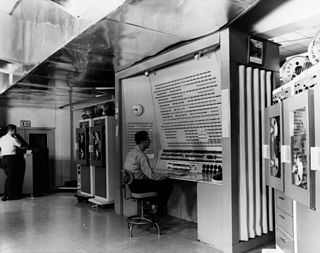
The BRLESC I was one of the last of the first-generation electronic computers. It was built by the United States Army's Ballistic Research Laboratory (BRL) at Aberdeen Proving Ground with assistance from the National Bureau of Standards, and was designed to take over the computational workload of EDVAC and ORDVAC, which themselves were successors of ENIAC. It began operation in 1962. The Ballistic Research Laboratory became a part of the U.S. Army Research Laboratory in 1992.
The MUSASINO-1 was one of the earliest electronic digital computers built in Japan. Construction started at the Electrical Communication Laboratories of NTT at Musashino, Tokyo in 1952 and was completed in July 1957. The computer was used until July 1962. Saburo Muroga, a University of Illinois visiting scholar and member of the ILLIAC I team, returned to Japan and oversaw the construction of MUSASINO-1.

The Harvard Mark III, also known as ADEC was an early computer that was partially electronic and partially electromechanical. It was built at Harvard University under the supervision of Howard Aiken for use at Naval Surface Warfare Center Dahlgren Division.
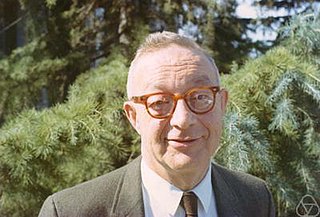
Abraham Haskel Taub was a distinguished American mathematician and physicist, well known for his important contributions to the early development of general relativity, as well as differential geometry and differential equations.
Minimal instruction set computer (MISC) is a central processing unit (CPU) architecture, usually in the form of a microprocessor, with a very small number of basic operations and corresponding opcodes, together forming an instruction set. Such sets are commonly stack-based rather than register-based to reduce the size of operand specifiers.

The MISTIC, or Michigan State Integral Computer, was the first computer system at Michigan State University and was built by its students, faculty and staff in 1957. Powered by vacuum tubes, its design was based on ILLIAC, the supercomputer built at University of Illinois at Urbana–Champaign, a descendant of the IAS architecture developed by John von Neumann.

The IBM Naval Ordnance Research Calculator (NORC) was a one-of-a-kind first-generation computer built by IBM for the United States Navy's Bureau of Ordnance. It went into service in December 1954 and was likely the most powerful computer at the time. The Naval Ordnance Research Calculator (NORC), was built at the Watson Scientific Computing Laboratory under the direction of Wallace Eckert.
The Ballistic Research Laboratory (BRL) was a leading U.S. Army research establishment situated at Aberdeen Proving Ground, Maryland that specialized in ballistics as well as vulnerability and lethality analysis. BRL served as a major Army center for research and development in technologies related to weapon phenomena, armor, electronic devices, and high-speed computing. In 1992, BRL was disestablished and its mission, personnel, and facilities were incorporated into the newly created Army Research Laboratory (ARL).

The University of Illinois Department of Computer Science is the academic department encompassing the discipline of computer science at the University of Illinois at Urbana-Champaign. According to U.S. News & World Report, both its undergraduate and graduate programs rank in the top five among American universities, and according to Computer Science Open Rankings, the department ranks equally high in placing Ph.D. students in tenure-track positions at top universities and winning best paper awards. The department also ranks in the top two among all universities for faculty submissions to reputable journals and academic conferences, as determined by CSRankings.org. From before its official founding in 1964 to today, the department's faculty members and alumni have contributed to projects including the ORDVAC, PLATO, Mosaic, JavaScript and LLVM, and have founded companies including Siebel Systems, Netscape, Mozilla, PayPal, Yelp, YouTube, and Malwarebytes.

A vacuum-tube computer, now termed a first-generation computer, is a computer that uses vacuum tubes for logic circuitry. Although superseded by second-generation transistorized computers, vacuum-tube computers continued to be built into the 1960s. These computers were mostly one-of-a-kind designs.














